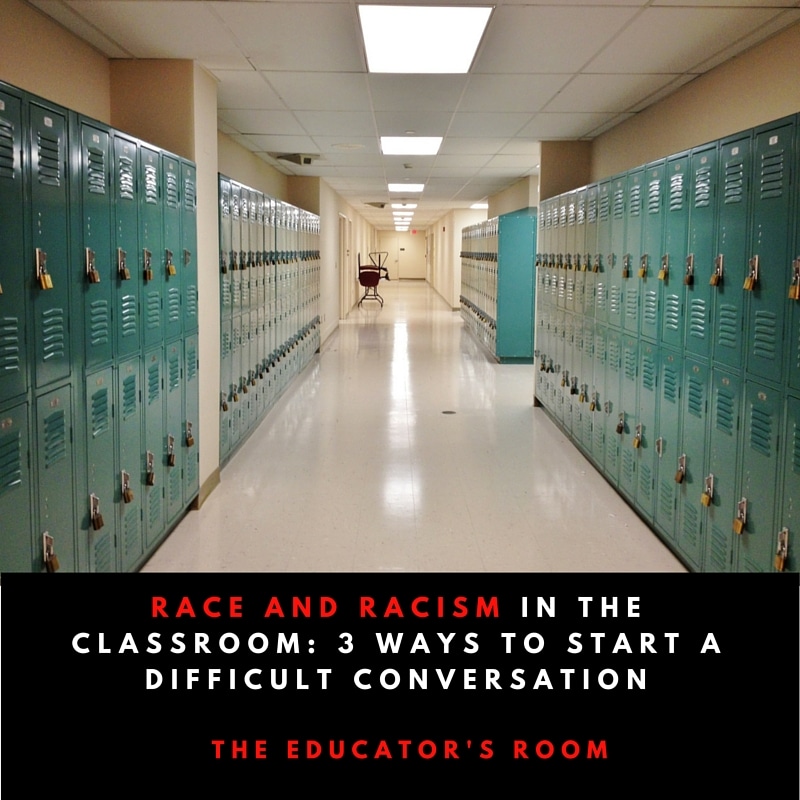Recently I’ve been doing a lot of thinking, writing and talking about how to discuss race and racism in a classroom setting. As an elementary school teacher, one of the first challenges I have to overcome is convincing people that we should even try to do this.
Understandably, a lot of people worry about “exposing” young kids to topics that can be scary or upsetting. Children, the logic often goes, are innocent and pure of racial and other biases plaguing our society. It is best to not even “infect” them with this type of information.
This logic is wrong, however. In fact, children are not colorblind. Research shows that even six-month-old infants have started to separate people into racial categories. By the time students reach me in the third grade, the biggest understanding they have about race and racism is that they exist, but are taboo topics.
Once people sign on to the idea of talking about race and racism with kids the second barrier is often how. Given how anxious many adults feel about these topics, it makes sense we struggle to enter into conversations about them with young people. Here are a few suggestions.
1. Use a read aloud
One of the easiest ways to start a conversation in my classroom is by using a shared text. There are countless books out there that will raise questions about race and racism. I have used Amazing Grace, As Good As Anybody andThe Other Side to talk about race and racism with my students.
But books don’t have explicitly talk about race or racism to be conversation starters. In fact books that feature only white characters are just as valuable. One of the biggest misconceptions we fall into when thinking about race conversations is that we need to focus on characters of color. But this perpetuates the lie that whiteness is neutral and non-racial.
Using a book or books with all white characters and questioning the lack of characters of color is another way to start a conversation. Which brings me to the next strategy.
2. Look at patterns
Kids are great at finding patterns. Looking at the world around us for patterns is a great way to find evidence of race and racism.
For example, to start a conversation about the lack of diversity in children’s literature this year, I started by asking my students who their favorite fictional characters were. We generated a list of about 20 characters. Then I asked, what skin color do these characters have? When we went through the list the students realized that all but one of their favorite characters were white.
Then I asked: Why do you think this is? Do you think this is okay?
One of the things I love about kids is their natural commitment to fairness. Calling their attention to “unnatural” patterns is a great way to expose racism as the systemic problem that it is. You can find patterns to look at for any age group. Kindergartners might wonder why most/all of the Fairy Tale princesses are white. Middle schoolers and high schoolers can look at more complex data like rates of school suspensions or college matriculation.
3. Listen carefully
The last strategy I can recommend is a basic one that teachers already do. Listen carefully. Pay attention.
Chances are students are already thinking and wondering about race and racism. Earlier this year, when students were working on self-portraits I heard them discussing their various racial and ethnic backgrounds.
Other times students may drop more subtle hints. In these cases, you may just have to read between the lines. For example, if a student says that a black character doesn’t look like a princess, we might infer why.
Whether students broach race explicitly or implicitly, it’s important to listen non-judgmentally. Ask questions if possible. It’s also okay to take time to respond. “I’m not quite sure what to say,” isn’t wrong. It’s honest. Just make sure you follow through on a commitment to come back to the topic. No matter what encourage the conversation, don’t stifle it.
These three strategies represent just a slice of the many best practices out there. Furthermore, these strategies work for all kinds of difficult conversations. As part of the Respect for All work I am doing at my school, I have compiled some resources. I invite you to check them out.
Having these conversations can be uneasy and even scary for us as adults, but remember they are necessary. If we are really eager to create a society where our students treat one another fairly, we have to talk about how.






Hi Rubén. I really enjoyed this topic. I am presenting an intervention slides to group of youths next week. This topics helped me. Thanks a lot.
Glad you found this helpful Jane! Good luck with your presentation!